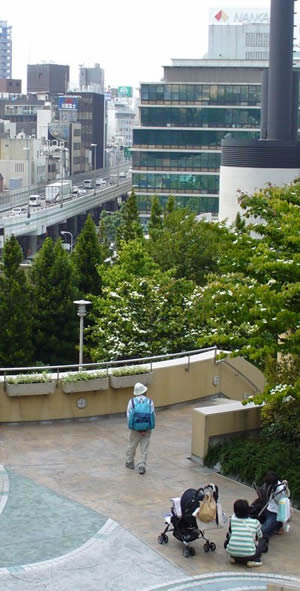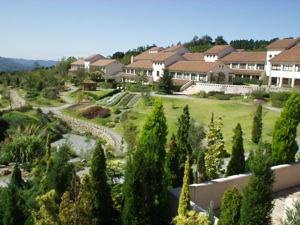What are the Benefits of Nature in Cities and Towns?
People and Nature in Cities: More than 80% of the U.S. population, and more than 50% of all people in the world live in urbanized areas. Nature in cities and towns includes parks, gardens, trees, small landscapes, and natural areas – all providing many benefits.
This web site provides an overview of the scientific evidence of human health and well-being benefits provided by urban forestry and urban greening.
Benefits Science: Recent research has revealed the environmental benefits provided by metro nature, such as improved air and water quality, energy savings, and reduced urban heat island effects. The social sciences provide additional evidence of benefits. Nearly 40 years of research shows that the experience of nature is profoundly important to human functioning, health, and well-being.
Human Health and Well-Being Benefits: We may intuitively accept that urban nature is important for public health. This web site presents supporting evidence, confirming intuitions and expanding our knowledge. Given the high population densities of urban areas, every bit of nearby nature has the potential to benefit hundreds to thousands of people daily.
Planning for Nature: People have long recognized that nature in cities and towns provides beauty and respite. However city green improves public health - ranging from individuals to entire communities. Taken as a whole, metro nature is a “green infrastructure” system that can be planned and integrated with built systems (such as transportation and housing) to create more sustainable urban environments.
Acknowledgements
Project Funding
Fiscal support for this project was provided by:
1. Program funds of the USDA Forest Service, Urban & Community Forestry Program; National Offices, Washington D.C., 2009-CA-11062765-024.
2. The USDA Forest Service on recommmendation of the National Urban and Community Forestry Advisory Council, 2009-CA-11062765-034.
3. The Pacific Northwest Research Station of the USDA Forest Service, Portland, OR and Seattle, WA.
4. Federal Financial Assistance Award of Recovery Act, Agreement No. 10-CA-11260489-090, Cooperative Agreement between USDA Forest Service and University of Washington.
Content Collaborators and Contributors
1. USDA Forest Service collaborators provided extensive administrative and editorial support for this project: a. Barbara Hollenbeck; Urban & Community Forestry - Program Manager; USDA Forest Service - State & Private Forestry; Alaska and Pacific Northwest Regions (AK, OR, WA); b. Susan Mockenhaupt (in memory); Urban & Community Forestry - National Program Manager; USDA Forest Service - State and Private Forestry; National Offices, Washington D.C.
2. Writing and copy editing contributors: a. Katrina Flora, B.A. University of Washington, b. Mary Ann Rozance, M.S. University of Washington, c. Mark Riffe, METI, Inc./USDA Forest Service.
University of Washington: College of the Environment
Kathleen L. Wolf, Ph.D.; Research Social Scientist; Project Director
This is an exciting project because, as a social scientist, I feel that we have reached a "critical mass" in our understanding of why it is important to have nature in cities. This research compendium tells us that urban greening should not be just an incidental, occasional program in cities, but merits comprehensive planning and management to generate all the benefits described in this web site.
The research on the associations of nearby nature and human health and well-being spans several decades, and is distributed across many disciplines, including psychology, sociology, geography, urban planning, economics, landscape architecture, and urban forestry. My own research program has made some contribution to this knowledge base: http://www.naturewithin.info/
I first envisioned creating this web site while on sabbatical at Awaji Landscape Planning and Horticulture Academy (ALPHA) in Japan. While there I learned of interesting research being done in horticulture therapy, community design, and urban environmental stewardship. My Japanese colleagues and I worked in the summer of 2008 to translate their research and present it to English speaking audiences using a web site. The web-based research outreach approach carried over to this project when I returned to the U.S.
June 2010

